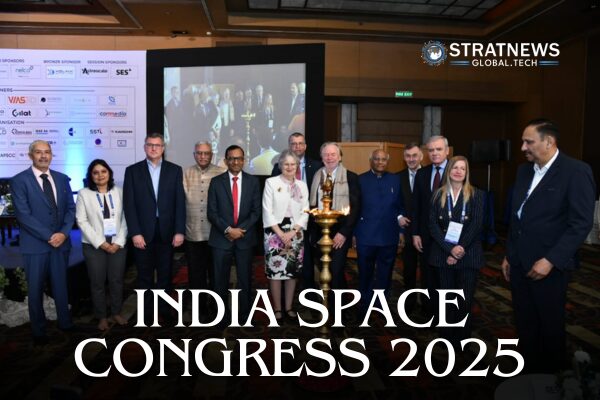Axiom-4 Launch Sets a Historic Stage for India Space Congress 2025
India Space Congress 2025 (ISC) opened today with a milestone moment in the country’s space journey: the successful launch of the Axiom-4 mission, which includes Indian Air Force Group Captain Shubhanshu Shukla aboard a commercial spaceflight to the International Space Station.
Two major announcements followed during the inaugural session:
The signing of a Memorandum of Understanding (MoU) between the Space Industry Association of India (SIA-India) and the International Institute of Space Law (IISL) to advance responsible and collaborative governance in space.
The launch of PRISM 2.0, a report focused on enhancing space trade and regulatory alignment between India and Australia. A dedicated session with Western Australia followed, outlining a roadmap to strengthen bilateral cooperation in space research, technology, and investment.
Hungary, ISC 2025’s Country Partner, was also represented on the Axiom-4 mission, highlighting growing international collaboration in low Earth orbit missions.
The fourth edition of ISC runs from June 25–27 under the theme “Pioneering Innovations in Space Technology: India’s Journey Towards Global Partnership.” The conference brings together over 800 delegates from 40+ countries, including government representatives, space agencies, private sector leaders, and researchers.
Among the dignitaries present were: Dr Pawan K. Goenka, Chairman, IN-SPACe; Dr Thierry E. Klein, President, Nokia Bell Labs Solutions; Dr Shailesh Nayak, Director, NIAS and Chair of ISC Organising Committee; Frances Adamson AC, Governor of South Australia; Philip Green OAM, Australian High Commissioner to India.
Dr Goenka announced a joint initiative with the Ministry of Statistics and Programme Implementation to establish a framework for estimating the size of India’s space economy. “We cannot manage what we do not measure,” he said, highlighting the need for reliable economic data to guide policy and investment.
Dr. Shailesh Nayak underlined the need for SIA-India to define clear technical and operational specifications to guide private investment in Earth observation. He also noted the recent transfer of Small Satellite Launch Vehicle (SSLV) technology from ISRO to Hindustan Aeronautics Limited (HAL) as an example of enabling commercial participation in India’s space sector.
Anil Prakash, Director General of SIA-India, outlined the broad scope of the 35 sessions planned over three days, including developments in:
- Satellite communications as a driver of digital transformation
- Earth observation as a national asset
- Navigation systems like NavIC enabling precision applications
- Frontier technologies such as quantum computing, AI, and microgravity manufacturing
Frances Adamson AC, Governor of South Australia noted that Australia and India are “natural partners” in space, capable of complementing each other’s strengths through joint missions, research, and industrial development. The collaboration is expected to grow through shared policies and strategic investment frameworks.
ISC 2025 builds on momentum from earlier initiatives like the SPADEx docking mission and sets a clear direction for India’s space ambitions — one rooted in international collaboration, private sector growth, and technological leadership.


